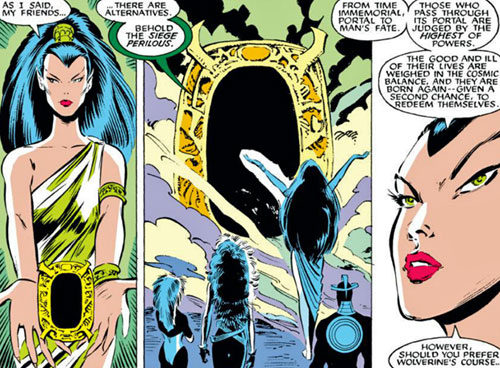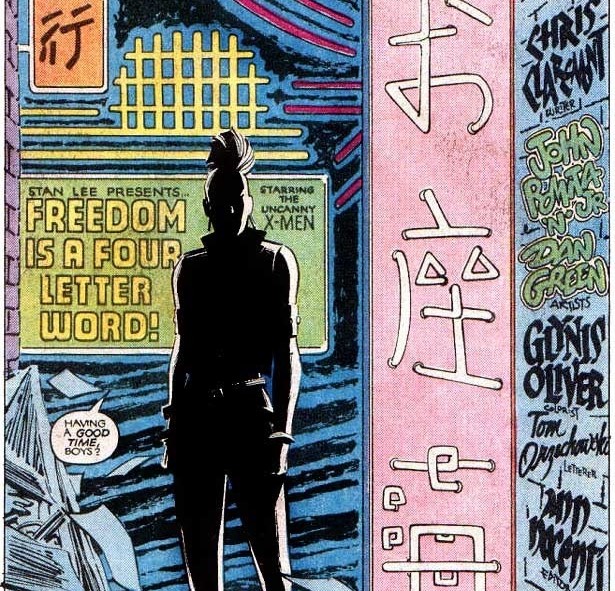The siege perilous was the magical artifact that book-ended the Australian era of X-Men. Those who pass through it are judged and given their greatest desire. As a plot device, it thus provides Claremont with a wonderful tool by which to telegraph character desire. #xmen 1/7 

Colossus gets to be a Soho artist. It speaks to his gentle, creative soul and the tragedy created by his mutant powers, due to the responsibility that goes with them, taking him away from the artist’s life. 2/7 

Psylocke becomes an emotionless assassin with a physicality and outward demeanour that more closely reflects the warrior heart and attitude that she expresses in earlier issues. It makes perfect sense that if Psylocke could be anyone, she’d choose Elektra 2.0. 3/7 

Rogue is dropped right back in her room in the X-Base, solidifying either that the character is still between judgments or that being an X-Man is in fact her personal paradise (which is kind of perfect for her redemption arc). 4/7 

Dazzler goes back to the life of fame she once aspired toward. She gets to sing and act and be fawned on by everyone. It might represent Alison moving past some of her haunting Type-A anxieties established earlier. 5/7 

Havok gets to be a Genoshan magistrate. In the wake of several tragedies, Havok was angry perhaps longed for structure, purpose and authorization to use his power in ways that a superhero can’t. Policing mutants might also make sense as an externalization of his self-hatred. 6/7 

All of them end up right back on the X-Men eventually. So maybe what they really wanted was to see the other options, but to then ultimately return to the X-Men anyway now not having to wonder what they were missing. 7/7 

As an aside, in Arthurian lore (Mallory's "Morte D'Arthur") the Siege Perilous is an empty chair at the round table reserved for whoever finds the Holy Grail. Not sure where C got the jewel-portal thing. I consulted a medievalist friend and she couldn't think of antecedents
• • •
Missing some Tweet in this thread? You can try to
force a refresh






















